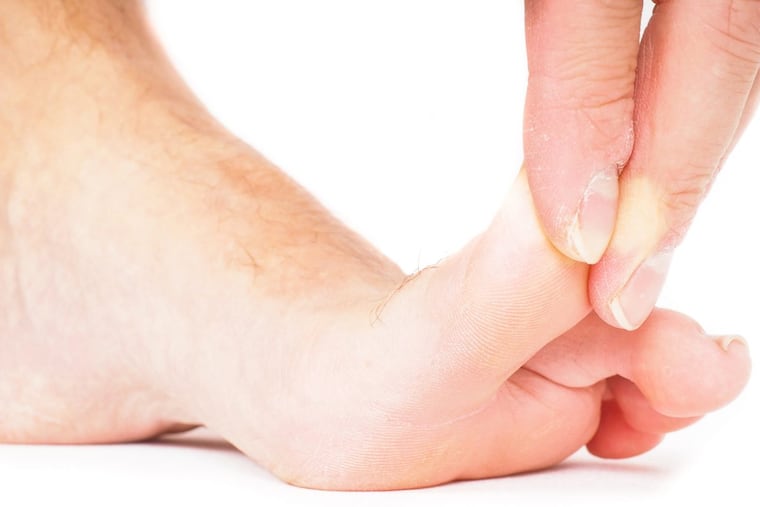Medical mystery: His big toe was in a bad way
The patient had some disturbing problems with his big toe that had doctors thinking he might have cancer.

A 70-year-old man came to the Jefferson Dermatology clinic, concerned about his left big toe. The nail had darkened and thickened, and was lifting up from the nail bed. He told us that the darkened lesion first appeared after he had a procedure to correct an ingrown toenail seven years ago.
For a short time after the ingrown toenail correction procedure, the discoloration was thought to be due to nail trauma. But as years went on with no change, this was unlikely.
The first step was dermatoscopy, using a specialized handheld device to take a closer look at the lesion. This revealed some odd staining: blue-black to red-brown.
This suggested a number of possibilities. It might be onycholysis – a painless separation of the nail from the nail bed, with bleeding under the nail causing the discoloration.
It also might be an under-the-nail skin cancer, given the distribution, color, location, and chronic nature of the lesion. Also, it has been shown that melanoma oftentimes is found after nail trauma, activated by inflammation.
Clearly, this lesion needed to be investigated. A punch biopsy of the nail plate was then performed. Staining revealed no fungi – which would be expected if it were onycholysis.
What we discovered next was entirely unexpected.
Solution
Based on the distribution, color, location, and chronic nature of the lesion, we were concerned our patient might have a melanoma.
But the biopsy showed something quite different: Black cotton debris that was stuck under the nail. The final diagnosis: sock debris.
This case is a prime example of why we generally start with the least-invasive procedure for diagnosis. By performing a biopsy of just the nail, instead of the underlying skin as well, we were able to save this patient from unnecessary injury. But when the clinical signs point more clearly to a melanoma, it may be necessary to go directly to a more invasive test.
It is important to pay attention to changes in your fingernails and toenails.
If you notice a new discoloration under a nail, but cannot recall any kind of trauma that might have caused bruising, it is best to see your dermatologist as soon as possible. If you do have melanoma, early diagnosis is crucial for effective treatment.
Nails can reveal information about your overall health. If any changes occur, such as longitudinal or latitudinal lines, discolorations, and/or pitting (small depressions in the nail), tell your doctor. Tests may be needed to find the cause.
Joya Sahu, M.D., is associate director of the Dermatopathology Center at Thomas Jefferson University Hospital, and Robert Duffy is a clinical research fellow in the Department of Dermatology at Thomas Jefferson University Hospital